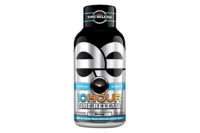Botanicals help fuel functional beverage formulations
Market waiting for mainstream brands to embrace botanical usage

As a new mom, I have learned to embrace the phrase multi-tasking. I did not think that I would have perfected the morning ritual of singing “Pop Goes the Weasel,” applying makeup and rocking a baby at the same time, but I have. Although beverage-makers don’t need to include nursery rhymes in their product formulations, they are doing their own type of multi-tasking.
Beverages no longer are just a means of refreshment for consumers. Now consumers are looking for a multitude of functionalities — energy, relaxation, immunity, digestion, etc. — while still providing that refreshing finish. To formulate these multi-functional beverages, beverage manufacturers are turning to a number of ingredient sources including probiotics, fiber, proteins and botanicals.
In this month’s Ingredient Spotlight (page 62), ingredient suppliers discussed how botanicals are providing more opportunities for functional beverage formulations. Gary Vorsheim, vice president of extract sales for Secaucus, N.J.-based Martin Bauer Inc., notes that the future is bright for botanicals to support the functional beverage market.
“It is my thought that there are multiple horizons when it comes to botanicals, the closer horizon, which is already being explored, is the use of herbals in specialty beverages that promote a function that could be energy, calming, digestive, etc.,” he says. “The more challenging horizon that is still off in the distance is when botanicals of all types will be used in mainstream beverages as the primary and secondary components of herbal and tea beverages, and also added to dairy drinks, juices, drink mixes, healthy kids beverages — basically in any beverage.”
Vorsheim notes that botanical usage in beverages seems to be mirroring the path that green tea took in the late ‘90s. “Time and creative product developments are the keys to botanicals becoming the next big trend after green tea,” he says.
However, adding function to a beverage is not as simple as including an herb or botanical in one’s formulation. Vorsheim explains that some botanicals can add function and a pleasant flavor, but not all do. “If a botanical is going to be used for a functional value in the product, then you will want to determine what the taste impact would be in the final product, there may be bitterness, perhaps a pleasant taste or in some cases a flavor that will need to be covered up,” he says. “So in this case, understanding the naturally occurring taste properties of the ingredients is essential. For a product where the botanical is being used for the taste, there are a lot of good options, but again you need to know what you are looking for so the right botanical is selected for your end product taste profile.”
As beverage-makers learn more about the taste and functional properties across the botanical market, I’m sure we will see more multi-tasking beverages in the market.
Looking for a reprint of this article?
From high-res PDFs to custom plaques, order your copy today!





